I’ve been working on a batch of plums for the last few years. I prune them every six months – once in spring, and once in fall.
The work is simple. If a branch or section of the trunk is straight, I wire it or remove it. Here are two examples.
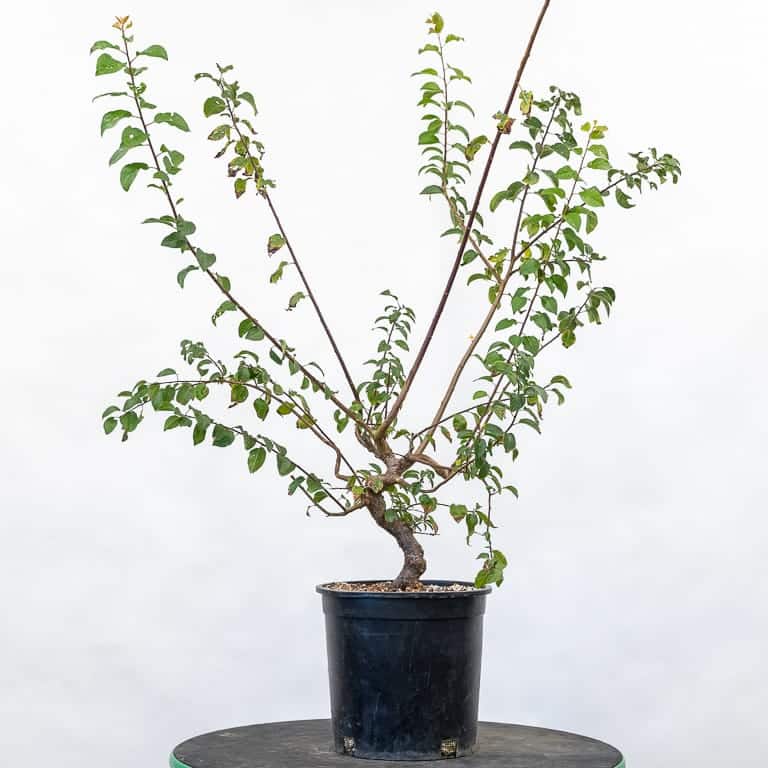
Japanese plum
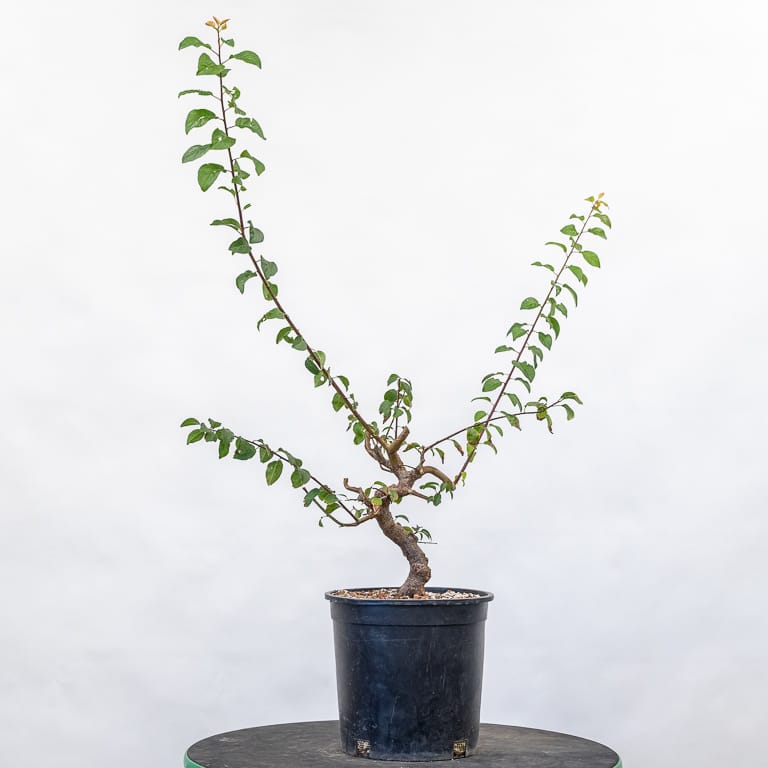
After removing the shoots that were too thick to bend
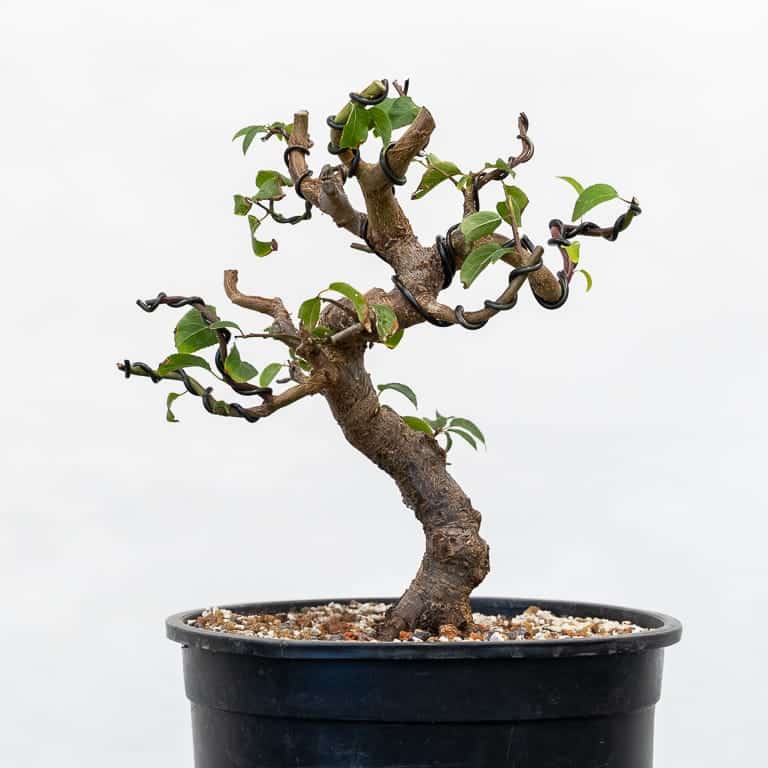
After pruning and wiring the slender shoots – 10″
And here’s the work on a second tree.
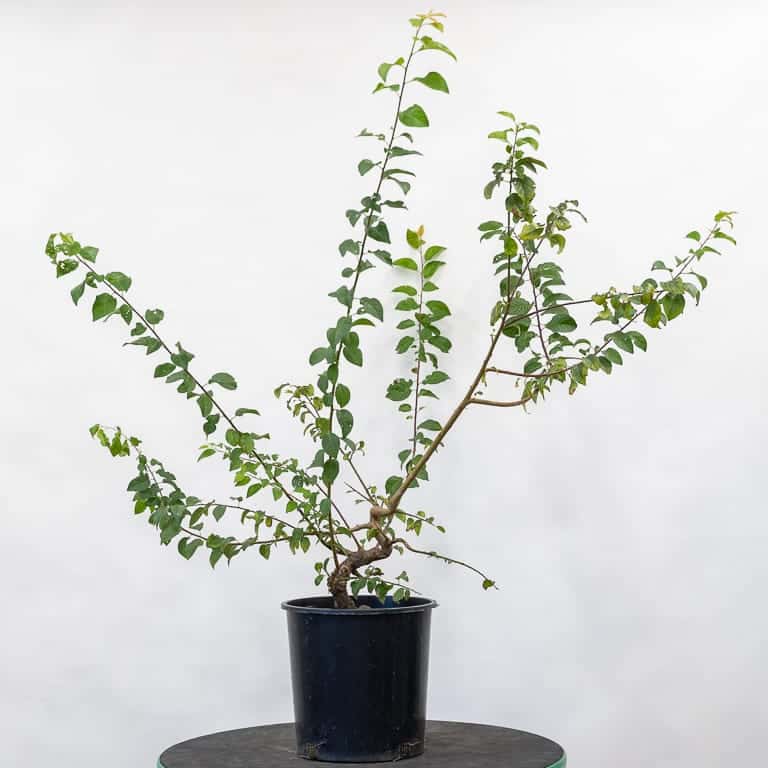
Another young tree with long shoots
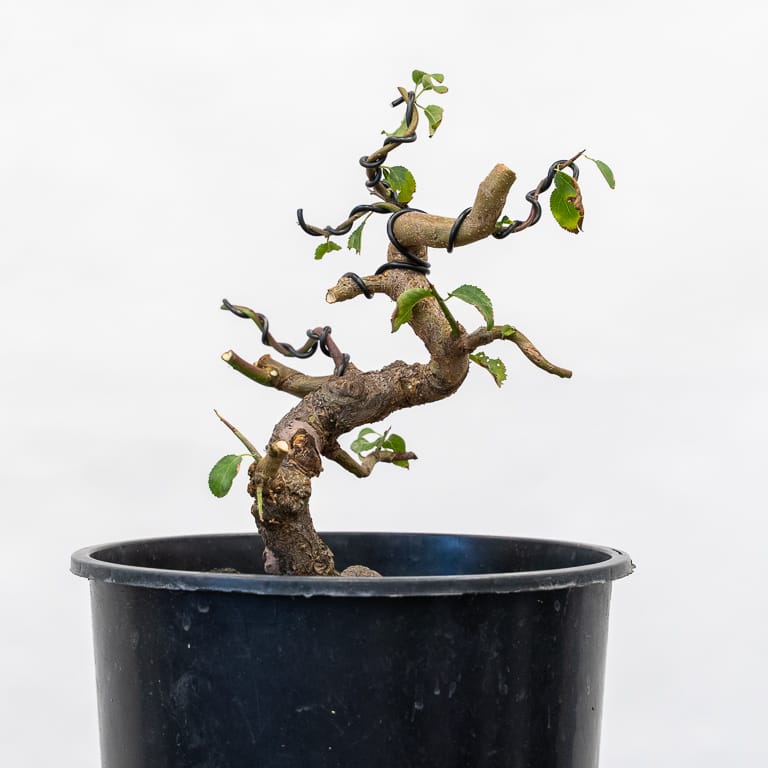
After cutback and wiring – 9.5″
Even though the work is the same as it was last year, it’s far more fun now that the trees are beginning to resemble bonsai.
The only question going forward is how large I want the trunks to grow. If I want bigger trees, I’ll continue this process for another five to ten years. If I decide to work with smaller trunks, I’ll start focusing on branch ramification in two to three years.
In the meantime, I’ll put the trees back in the sun and let them grow freely until next spring.
Subscribe to Bonsai Tonight
New Posts Delivered Every Tuesday and Friday
Andy Johnson says
Hey Jonas,
By doing fall work on these and cutting off all of those branches, are you not removing flowering stems ? Or is this something that doesn’t bother you as these are trees in development?
The reason I ask, is I’ve got two Prunus Mume’s – one flowers every year but the other is still too young. I was leaving all the branches on so as to get some flowers but mainly to thicken the trunk.
Thanks Jonas.
Andy
Jonas Dupuich says
Good question Andy – in short, yes, I’m cutting away a lot of new growth that may have flower buds. These trees haven’t flowered much, if at all, yet as they’re still young. As you suggested, I can add that I don’t think about flowers until the trunk and branches are in place – quite a few years out at this point.
Leaving the branches as you have on your ume is good for thickening and preserving flowers – sounds like your trees are off to a good start!
Jim says
Hey Jonas, what is your growing medium for trees in development in nursery containers? Is it something open that promotes such fast growth? You don’t seem to be in a hurry to get things out of nursery pots. Great site, thank you. Jim
Jonas Dupuich says
Hi Jim! I think I’m using 30% akadama for these trees, with mostly pumice for the remainder. As for the container, I don’t think about bonsai pots until the trunk is ready which is a few years out at this point. Thanks for writing!
Radovan says
What is the Latin name of the species?
Jonas Dupuich says
Hi Radovan – my best guess is Prunus salicina, commonly known as “Japanese plum.” Thanks for the note!
Radovan says
Hi.
Thanx for the reply. Will check it out. I love Prunus Mume but they are difficult to propagate. Maybe this could be interesting alternative.
Jonas Dupuich says
Sounds good – let us know how it goes!
Robert says
Just listening to what I’ve learned from Ryan, this is deciduous and needs to build up strength for winter, though not sure you get a winter, even still it seems like this would really set back the trees strength for next year, especially since you are trying to build wood still. The trees will not be able to take up the same sugar if you would have left these till I would think dec for you.
Interested in your thinking here?
Jonas Dupuich says
Hi Robert – thanks for the note! In short, everything you mentioned sounds good, and tomorrow’s post addresses this exact topic in a bit more detail.
One thing I didn’t mention in tomorrow’s post is that I’m always curious to learn more about what happens when we do work at different times. As a result, I often prune (or repot, or graft) early or late to get a better idea of what happens in these cases. While a general trend may be obvious (the tree gets weaker or stronger), I’ve been able to learn a bit about how great, or minor, the effect actually is.
Pruning early does slow the tree down a bit, but fortunately slow growth can come in handy in terms of internode length or trunk character.
Do you have some good experience to share related to timing fall pruning in your area?